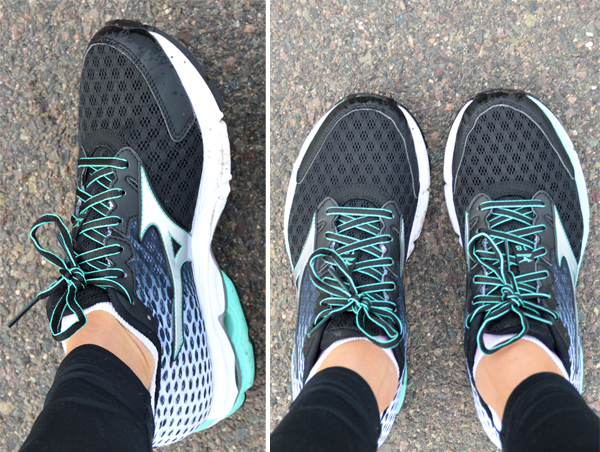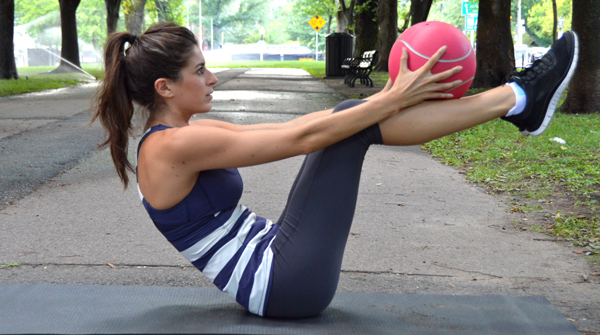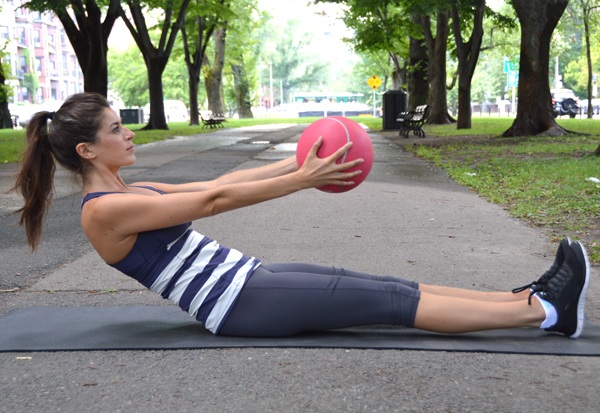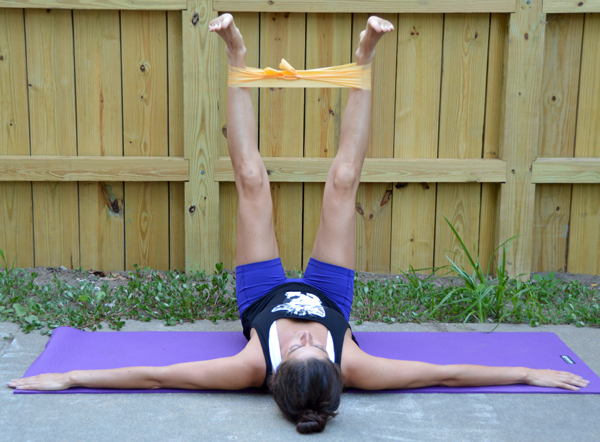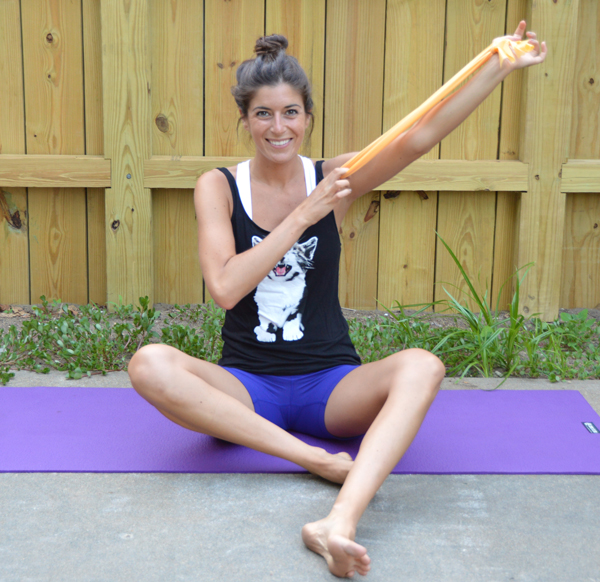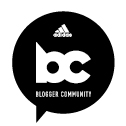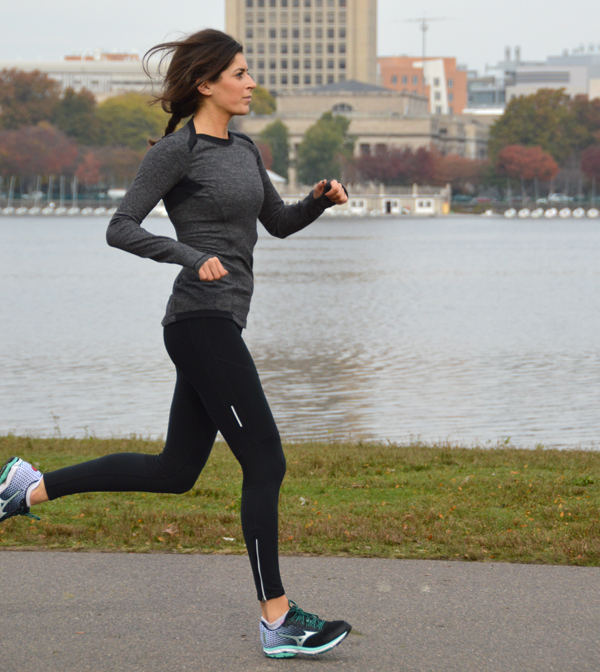 This post was sponsored by FitFluential LLC on behalf of Mizuno. While I was compensated, all opinions—as always!—are my own.
This post was sponsored by FitFluential LLC on behalf of Mizuno. While I was compensated, all opinions—as always!—are my own.
1/26/15 UPDATE: Hey guys! At the time I wrote this post, I had been testing out the sneaker for about a month and, as I mentioned, hadn’t had any trouble with my achilles tendonitis flaring up. Well DAMNIT it started to bother me again after several months of running with this shoe. People RAVE about Mizuno Wave Riders, so I still stand behind my positive review of this sneaker–I think the problem is more in my running form. As you can see in some of the pictures, I’m a heel-striker. A minimalist shoe helps force me onto my toes and I think that’s what relieves the tendonitis. This shoe is more cushioned, so for me personally, it enables my bad heel strike. I no longer run in this shoe, and have returned to a minimalist sneaker when I run (right now it’s the Nike Free +3). I gave these Mizunos to my non-heel-striker friend and she LOVES them. So again, the shoe isn’t bad–it’s just not the right fit for me. Wanted to update so that this review isn’t misleading!
I jumped at the opportunity to try out the Mizuno Wave Rider 18. Starting in college, I started having Achilles tendonitis flair-ups every time I went running—didn’t matter if it was 1 mile or 10 (LOL as if College Nicole would ever have run 10 miles…). For the most part, I just battled through it, but about two years ago, I switched over to a barefoot-feel running shoe and it was a total game changer. Haven’t had a single issue with tendonitis since. However, with that amazing improvement came another problem: my feet and knees started to hurt if I ran more than five or six miles. It was not quiiiiite enough support.
I’ve been wanting to try out a lightweight running shoe that offers some additional cushioning, and when I saw that the description of the Wave Rider 18 kept emphasizing this idea of “just enough” support, it struck home. After running consistently in them for a few weeks now, I’ve found that they really do have a great balance between lightweight flexibility and that cushioning shock-absorbent sole that I felt I was lacking. They’re so comfortable! But the big concern for me was that going back to a more supportive shoe would alter my foot strike and bring back tendonitis issues. Drum roll please…
So far, so good! Granted, I haven’t gone more than 5 miles at a time in the Wave Rider 18 yet, but no tendonitis flair-ups—yay! The Mizuno Wave Rider 18 retails at $119.99 and you can check it out HERE. I’m wearing it in Black/Silver/Florida Keys.
Since we’re on the topic of running, I wanted to share this quick workout that’s perfect for pairing with a long run. It’s all upper body and core work so those legs can save their energy for pounding the pavement (or trail or treadmill).
Upper Body & Core Workout
Equipment I Used:
- Set of 8-lb hand weights
- Exercise mat
- Gymboss Interval Timer
You’ll do each exercise for 30 seconds before moving immediately on to the next (no breaks in between exercises). Once you’ve gone through the whole circuit, rest for 30-60 seconds. Repeat twice more for a total of 3 times through the exercises. I set my interval timer for 32 rounds of 30 seconds of work and 0 seconds of rest so that it would beep every 30 seconds, signaling me to move onto the next exercise (32 instead of 30 to account for two 30-second breaks).
- Plank Triceps Kickbacks (RIGHT): Start in a plank position, left hand stacked directly under left shoulder, right hand holding onto a hand weight, elbow bent. Keeping your hips level as you do this (fight your body’s natural tendency to shift all the weight into your left side), extend your right hand straight back behind you, really squeezing the back of the arm (triceps) as you do. Hinging at the elbow, bring the weight slowly back to starting position.
- Plank Triceps Kickbacks (LEFT)
- Push Ups: You know the drill! If you need to modify, do these from your knees.
- Russian Twists: Start seated, holding the weights in both hands at your chest, feet lifted off the ground with your knees bent. Lean back slightly, core engaged, balancing on your tailbone. Twist to one side, bringing the weights to the outer side of that hip; then repeat in the other direction. Really twist at the waist—you want your chest to be totally facing whatever side you’re bringing the weights.
- Side Plank Row Extensions (RIGHT): Start in a side plank position, left hand stacked under left shoulder, dumbbell in right hand (start with a straight right arm, weight held a few inches off the ground. From here, row the right elbow straight up towards the ceiling and then straighten the elbow, lifting the weight up into the air. Make it two distinct movements: row, extend. Reverse the movement, bending the elbow and then straightening it downward to your starting position.
- Side Plank Row Extensions (LEFT)
- Seated Shoulder Press Ups: Imagine your forearms and elbows have magnets on them. Holding a weight in each hand, palms facing your face, hold your forearms in front of you, elbows bent at 90 degrees. Fight to hold the elbows as close to each other as you can throughout the whole movement. From here, you’re going to press your hands straight up, lifting the elbows, keeping forearms close together. Be careful not to shrug your shoulders up towards your ears as you do this. After pressing up as high as you can, slowly return back to starting. To engage the core, we’re going to do these in a seated position, legs out straight in front of you, posture straight and upright.
- Serve the Platter in Plank (RIGHT): These are deceptively hard! Start in a plank position, left hand stacked directly under left shoulder, right hand holding onto a hand weight, palm facing up, elbow softly bent. From here, keeping your hips level (resist your body’s tendency to lean into that left side), reach that right hand forward, getting as close to a straight arm as you can. Slowly return to starting position.
- Serve the Platter in Plank (LEFT)
- Boat Pose with Serve the Platter: Start by getting into a boat pose position holding a weight in each hand. You’ll be balancing on your tailbone, leaning back slightly with a straight spine (squeeze those abs in tight!) with legs lifted off the ground. If you can, straighten the legs so that your body forms a V shape. To modify, keep your knees bent. From here, palms facing up, reach those weights up and out in front of you, extending the elbows. Slowly bring hands back to starting position, keeping legs lifted the whole time.
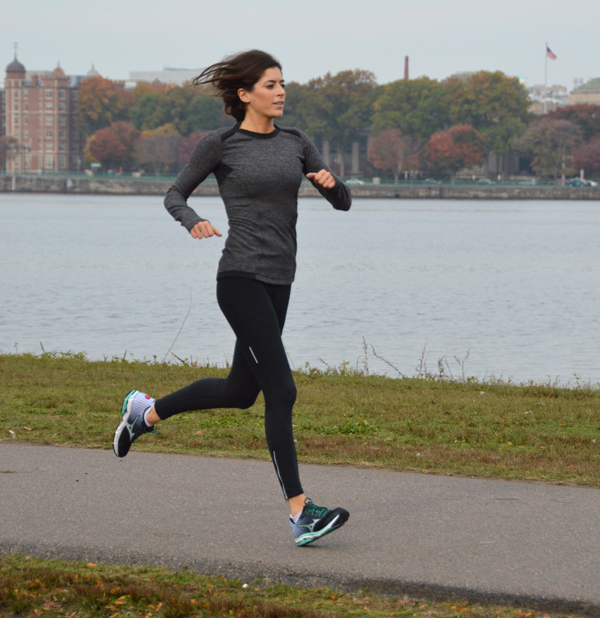 WEARING | sneakers: c/o Mizuno // leggings: Nike // top: Lululemon
WEARING | sneakers: c/o Mizuno // leggings: Nike // top: Lululemon
Next time you’re going on a long run (or short run) give this workout a try—it’s only 15 minutes long and is a great compliment to that lower-body cardio!
